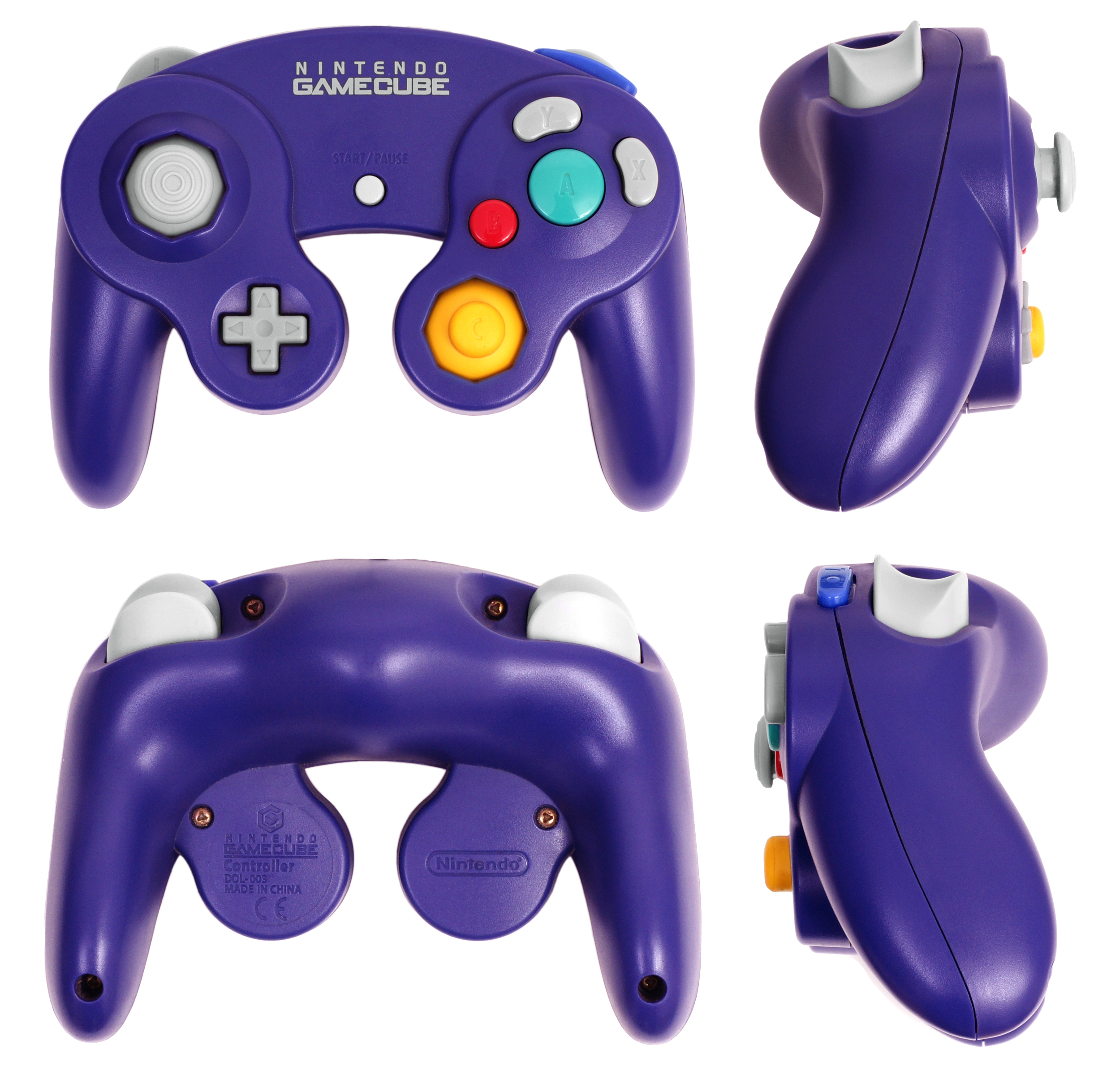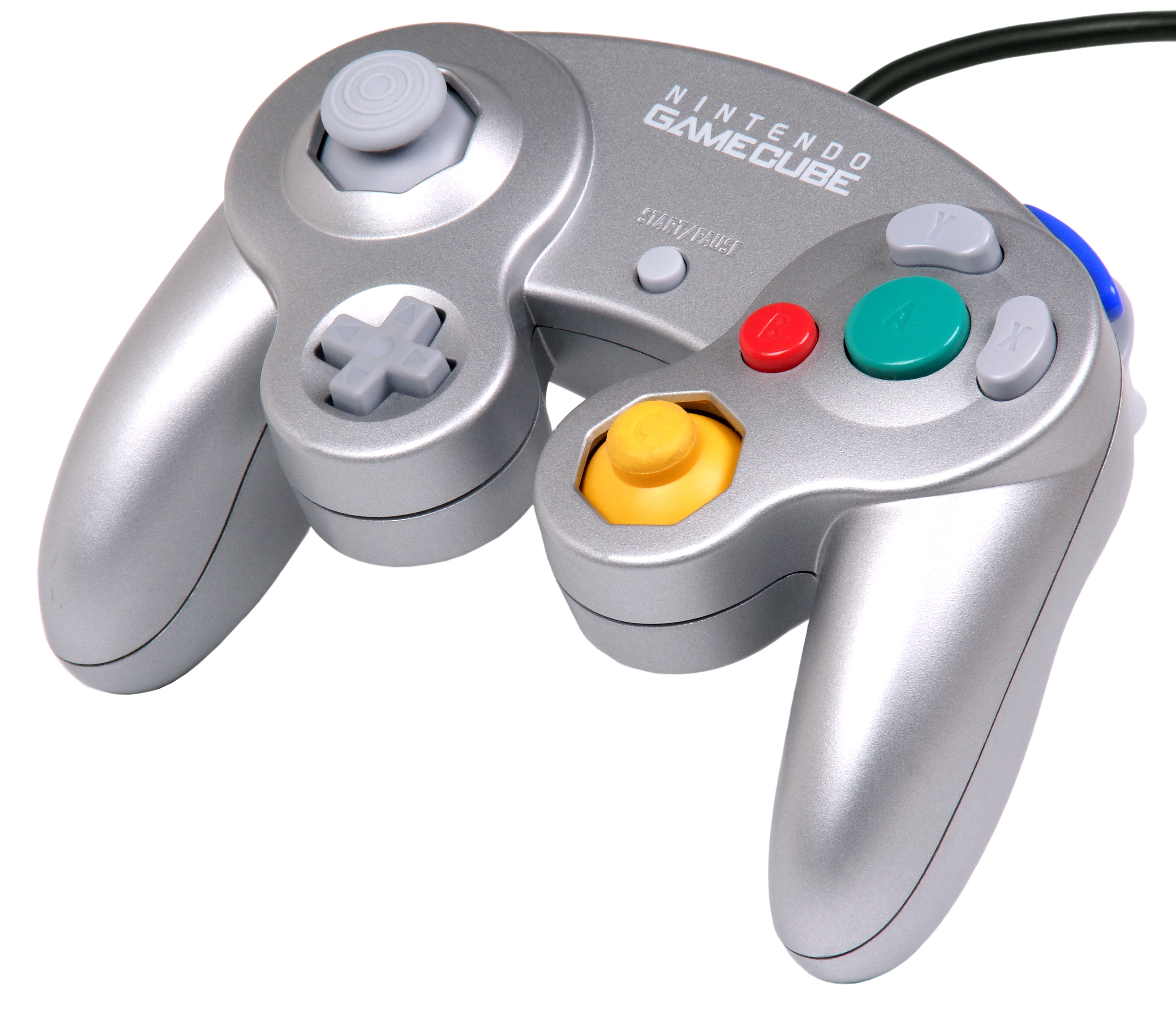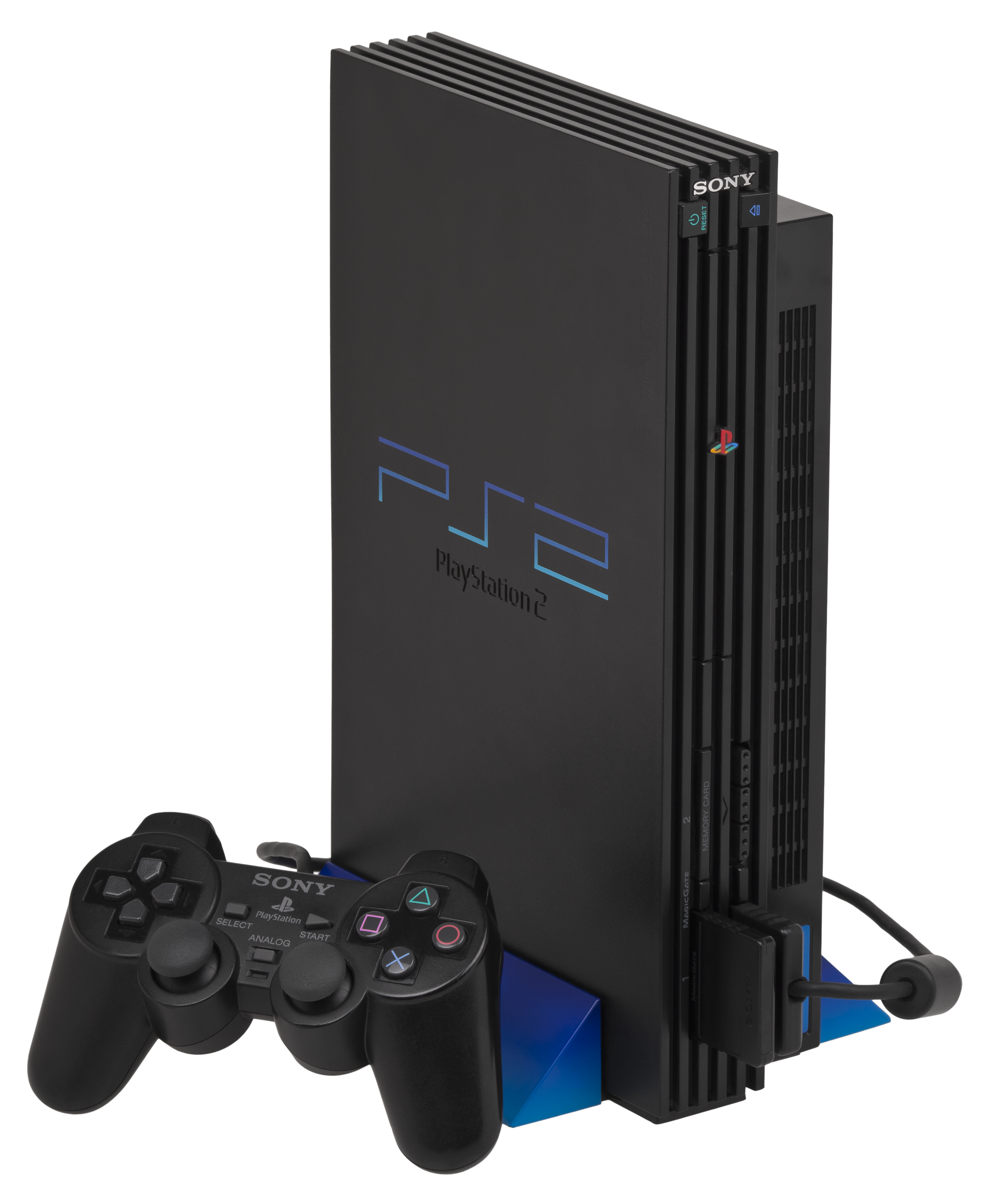|
GameCube
The is a home video game console developed and released by Nintendo in Japan on September 14, 2001, in North America on November 18, 2001, and in PAL territories in 2002. It is the successor to the Nintendo 64 (1996), and predecessor of the Wii (2006). In the sixth generation of video game consoles, the GameCube competed with Sony's PlayStation 2 and Microsoft's Xbox. Flagship games include ''Super Smash Bros. Melee'', ''Luigi's Mansion'', '' Super Mario Sunshine'', '' Metroid Prime'', '' Mario Kart: Double Dash'', ''Pikmin'', '' Pikmin 2'', '' The Legend of Zelda: The Wind Waker'', ''Chibi-Robo!'', and '' Animal Crossing''. Development was enabled by the 1997 formation of computer graphics company ArtX, of former SGI employees who had created the Nintendo 64, and which was later acquired by ATI to produce the GameCube's GPU. In May 1999, Nintendo announced codename Dolphin, released in 2001 as the GameCube. It is Nintendo's first console to use optical discs instead o ... [...More Info...] [...Related Items...] OR: [Wikipedia] [Google] [Baidu] |
GameCube Controller
The GameCube controller is the standard game controller for the GameCube home video game console, manufactured by Nintendo and launched in 2001. As the successor to the Nintendo 64 controller, it is the progression of Nintendo's controller design in numerous ways. The contentious M-shaped design of its predecessor was replaced with a more conventional handlebar style controller shape; a second analog stick was added, replacing the C buttons with a C stick and the X and Y face buttons, last seen on the Super Nintendo controller, were reintroduced; the shoulder buttons were changed to hybrid analog triggers. A wireless variant of the GameCube controller known as the WaveBird was released in 2002. Though many elements of the GameCube controller's unique design were not embraced by many future twin-stick gamepads (such as the pressure-sensitive shoulder buttons and a face button layout that emphasizes one button over three others), some controllers adopted its staggered analog s ... [...More Info...] [...Related Items...] OR: [Wikipedia] [Google] [Baidu] |
GameCube Accessories
GameCube accessories include first-party releases from Nintendo, and third-party devices, since the GameCube's launch in 2001. First-party and licensed Controllers GameCube controller The GameCube controller was released alongside the console and comes bundled with every unit. Standard colors include Indigo, Black, Spice (orange), Emerald Blue (green, only available in Japan), Platinum, Indigo-clear, and Pearl White (only available in Europe). There are also limited edition controllers available such as a split blue and red, with the Mario "M" logo replacing the regular GameCube logo seen on standard controllers (there have also been green and blue Luigi "L" controllers and similarly yellow and pale blue Wario "W" controller). There are also specially colored controllers bundled with systems, such as the Mobile Suit Gundam Edition (Red), Symphonic Green Edition (Turquoise Green) and the Final Fantasy Crystal White Edition. The controller can also be used to play certain games on ... [...More Info...] [...Related Items...] OR: [Wikipedia] [Google] [Baidu] |
GameCube Memory Card
GameCube accessories include first-party releases from Nintendo, and third-party devices, since the GameCube's launch in 2001. First-party and licensed Controllers GameCube controller The GameCube controller was released alongside the console and comes bundled with every unit. Standard colors include Indigo, Black, Spice (orange), Emerald Blue (green, only available in Japan), Platinum, Indigo-clear, and Pearl White (only available in Europe). There are also limited edition controllers available such as a split blue and red, with the Mario "M" logo replacing the regular GameCube logo seen on standard controllers (there have also been green and blue Luigi "L" controllers and similarly yellow and pale blue Wario "W" controller). There are also specially colored controllers bundled with systems, such as the Mobile Suit Gundam Edition (Red), Symphonic Green Edition (Turquoise Green) and the Final Fantasy Crystal White Edition. The controller can also be used to play certain games on ... [...More Info...] [...Related Items...] OR: [Wikipedia] [Google] [Baidu] |
Sixth Generation Of Video Game Consoles
In the history of video games, the sixth generation era (sometimes called the 128-bit era; see "bits and system power" below) is the era of computer and video games, video game consoles, and handheld gaming devices available at the turn of the 21st century, starting on November 27, 1998. '' Platforms'' in the sixth generation include consoles from four companies: the Sega Dreamcast (DC), Sony PlayStation 2 (PS2), Nintendo GameCube (GC), and Microsoft Xbox. This era began on November 27, 1998, with the Japanese release of the Dreamcast, which was joined by the PlayStation 2 on March 4, 2000, and the Xbox and Gamecube on November 15 and 18, 2001, respectively. In April 2001, the Dreamcast was among the first to be discontinued. Xbox in 2006, GameCube in 2007 and PlayStation 2 was the last, in January 2013. Meanwhile, the seventh generation of consoles started on November 22, 2005, with the launch of the Xbox 360. The major innovation of this generation was of full utilization of ... [...More Info...] [...Related Items...] OR: [Wikipedia] [Google] [Baidu] |
GameCube Online Functionality
The GameCube is one of Nintendo's home video game consoles and part of the sixth generation of video game consoles. Although the competing PlayStation 2 and Xbox consoles supported substantial amounts of online games, the GameCube had only eight games with internet or local area network (LAN) support. Nintendo never commissioned any servers or internet services to interface with the console, but allowed other publishers to do so and made them responsible for managing the online experiences for their games. Nintendo remained pensive with its online strategy for the duration of the GameCube's lifespan, defiant of growing interest from players and the success of Microsoft's Xbox Live online service. Company leaders including Shigeru Miyamoto and Satoru Iwata based their stance on concerns with maintaining quality control over their games and doubts that players would want to pay subscription fees. Playing GameCube games over a network requires the official broadband or modem adapte ... [...More Info...] [...Related Items...] OR: [Wikipedia] [Google] [Baidu] |
Game Boy Player
The (DOL-017) is a GameCube peripheral developed by Nintendo which enables it to play Game Boy, Game Boy Color, and Game Boy Advance cartridges, allowing those games to be played on a television. It connects via the high speed parallel port at the bottom of the GameCube and requires use of a boot disc to access the hardware. Rather than emulating a Game Boy system, the Game Boy Player uses physical hardware nearly identical to that of a Game Boy Advance. The device does not use the enhanced effects used by the Super Game Boy (a similar peripheral for the Super Nintendo Entertainment System). The peripheral received mainly positive reviews from critics. Design and features The Game Boy Player is available in Indigo, Black, Spice, or Platinum in Japan; Black in North America and Europe and Black and Indigo in Australia. A special Game Boy Player for the Panasonic Q (SH-GB10-H) was released because the Q's legs are oriented differently from the original GameCube's. All Game Boy P ... [...More Info...] [...Related Items...] OR: [Wikipedia] [Google] [Baidu] |
GameCube Game Disc
Nintendo optical discs are physical media used to distribute video games on three of Nintendo's consoles that followed the Nintendo 64. These are the GameCube Game Disc, Wii Optical Disc, and Wii U Optical Disc. The physical size of a GameCube Game Disc is that of a miniDVD; the Wii is based on DVD format, and Wii U Optical Discs are based on Blu-ray format. To maintain backward compatibility between generations of game consoles, GameCube discs are compatible with the first model of the Wii, and Wii Optical Discs are compatible with the Wii U. A burst cutting area is located at the inner ring of the disc surface. All official discs and their formats were manufactured and developed by Panasonic. In 2017, Nintendo discontinued disc-based media in favor of game cards for the Wii U's successor, the Nintendo Switch, although it would license several more physically released Wii and Wii U games for many more months, with the last one being a port of '' Shakedown: Hawaii'' to both con ... [...More Info...] [...Related Items...] OR: [Wikipedia] [Google] [Baidu] |
WaveBird
The WaveBird Wireless Controller (stylized as WAVEBIRD, commonly abbreviated as WaveBird or WaveBird controller) is a radio frequency-based wireless controller manufactured by Nintendo for use with the GameCube home video game console. Its name is a reference to Dolphin, the GameCube's codename during development. The WaveBird was available for purchase separately as well as in bundles with either ''Metroid Prime'' or '' Mario Party 4'', which were exclusive to Kmart in the US. Development Nintendo had attempted to create a reliable wireless controller since the development of the Famicom. Its first attempt was for the Advanced Video System (AVS), the precursor to the Nintendo Entertainment System (NES), which included two wireless controllers but was never released. Nintendo later developed an infrared (IR) adapter called the NES Satellite for the NES. Released in 1989, it used infrared to extend the length of up to four wired controllers, which would plug into the base of t ... [...More Info...] [...Related Items...] OR: [Wikipedia] [Google] [Baidu] |
Nintendo
is a Japanese multinational video game company headquartered in Kyoto, Japan. It develops video games and video game consoles. Nintendo was founded in 1889 as by craftsman Fusajiro Yamauchi and originally produced handmade playing cards. After venturing into various lines of business during the 1960s and acquiring a legal status as a public company, Nintendo distributed its first console, the Color TV-Game, in 1977. It gained international recognition with the release of '' Donkey Kong'' in 1981 and the Nintendo Entertainment System and '' Super Mario Bros.'' in 1985. Since then, Nintendo has produced some of the most successful consoles in the video game industry, such as the Game Boy, the Super Nintendo Entertainment System, the Nintendo DS, the Wii, and the Switch. It has created numerous major franchises, including ''Mario'', '' Donkey Kong'', ''The Legend of Zelda'', ''Pokémon'', '' Kirby'', ''Metroid'', '' Fire Emblem'', '' Animal Crossing'', '' Splatoon'', '' St ... [...More Info...] [...Related Items...] OR: [Wikipedia] [Google] [Baidu] |
Game Boy Advance
The (GBA) is a 32-bit handheld game console developed, manufactured and marketed by Nintendo as the successor to the Game Boy Color. It was released in Japan on March 21, 2001, in North America on June 11, 2001, in the PAL region on June 22, 2001, and in mainland China as iQue Game Boy Advance on June 8, 2004. The GBA is part of the sixth generation of video game consoles. The original model does not have an illuminated screen; Nintendo addressed that with the release of a redesigned model with a frontlit screen, the Game Boy Advance SP, in 2003. A newer revision of the redesign was released in 2005, with a backlit screen. Around the same time, the final redesign, the Game Boy Micro, was released in September 2005. As of June 2010, 81.51 million units of the Game Boy Advance series have been sold worldwide. Its successor, the Nintendo DS, was released in November 2004 and is backward compatible with Game Boy Advance software. History Contrary to the previous Game ... [...More Info...] [...Related Items...] OR: [Wikipedia] [Google] [Baidu] |
Gekko (microprocessor)
Gekko is a superscalar out-of-order 32-bit PowerPC microprocessor custom-made by IBM in 2000 for Nintendo to use as the CPU in their sixth generation game console, the GameCube, and later the Triforce Arcade Board. Development Gekko's role in the game system was to facilitate game scripting, Artificial Intelligence, physics and collision detection, custom graphics lighting effects and geometry such as smooth transformations, and moving graphics data through the system. The project was announced in 1999 when IBM and Nintendo agreed to a dollar contract (IBM's largest ever single order) for a CPU running at approximately 400 MHz. IBM chose to modify their existing PowerPC 750CXe processor to suit Nintendo's needs, such as tight and balanced operation alongside the "Flipper" graphics processor. The customization was to the bus architecture, DMA, compression and floating point unit which support a special set of SIMD instructions. The CPU made ground work for custom l ... [...More Info...] [...Related Items...] OR: [Wikipedia] [Google] [Baidu] |
ATI Technologies
ATI Technologies Inc. (commonly called ATI) was a Canadian semiconductor technology corporation based in Markham, Ontario, that specialized in the development of graphics processing units and chipsets. Founded in 1985 as Array Technology Inc., the company listed publicly in 1993. Advanced Micro Devices (AMD) acquired ATI in 2006. As a major fabrication-less or fabless semiconductor company, ATI conducted research and development in-house and outsourced the manufacturing and assembly of its products. With the decline and eventual bankruptcy of 3dfx in 2000, ATI and its chief rival Nvidia emerged as the two dominant players in the graphics processors industry, eventually forcing other manufacturers into niche roles. The acquisition of ATI in 2006 was important to AMD's strategic development of its Fusion generation of computer processors, which integrated general processing abilities with graphics processing functions within a chip. Since 2010, AMD's graphics processor pro ... [...More Info...] [...Related Items...] OR: [Wikipedia] [Google] [Baidu] |









